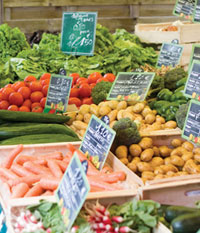 Sustainable. Local. Organic. They've become culinary buzz words. They've caused confusion. What does it all mean? Russ Parsons says there is not even a definition for sustainability. He also cautions that organic is not necessarily synonymous with small farming. He suggests visiting a conventional farm to see what they're doing.
Sustainable. Local. Organic. They've become culinary buzz words. They've caused confusion. What does it all mean? Russ Parsons says there is not even a definition for sustainability. He also cautions that organic is not necessarily synonymous with small farming. He suggests visiting a conventional farm to see what they're doing.
Basically, all the buzz boils down to just eating good food. Good food is the stuff you'll find around the outside perimeter of your supermarket -- fresh fruits and vegetables, whole grain breads, fish, meat, milk, butter. It's the great food we find at the farmers' market, grown on small farms by people who care about protecting the earth and protecting the health of humans who will eat the food they grow.

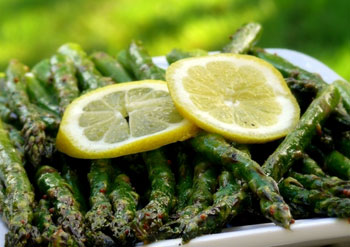 Side dishes are the key to making every meal a hit. They are essentially the glue that holds dinner
together. Roasted asparagus is by far Spring's quintessential veggie and this mustard-dill vinaigrette
just takes it up a notch! Now, having said that, asparagus can be the quintessential enemy of wine.
Side dishes are the key to making every meal a hit. They are essentially the glue that holds dinner
together. Roasted asparagus is by far Spring's quintessential veggie and this mustard-dill vinaigrette
just takes it up a notch! Now, having said that, asparagus can be the quintessential enemy of wine.
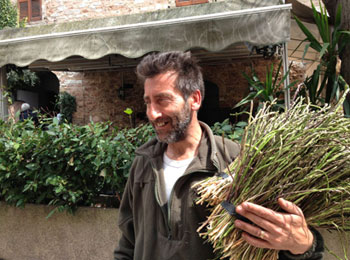 When Italians bid you goodbye between the hours of 11:00 in the morning and 1:00 in the afternoon, rather than saying, “See you around” or “Have a nice day,” they say “Buon pranzo,” which is a wish for you to have a good lunch. There’s the difference right there.
When Italians bid you goodbye between the hours of 11:00 in the morning and 1:00 in the afternoon, rather than saying, “See you around” or “Have a nice day,” they say “Buon pranzo,” which is a wish for you to have a good lunch. There’s the difference right there.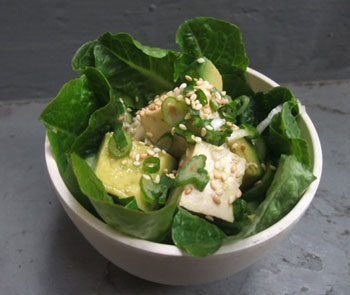 This is a zen salad. For one thing, like meditation, it requires slowing down. Normally salad is something you throw together at the last minute. Not this one. Patience, little grasshopper. You need to marinate the tofu overnight. It's also simple and straightforward. And it requires no oil. I know what you're thinking, what does THAT have to do with being zen? I'll tell you. This is an enlightened salad. The avocado is rich enough that you really don't need any additional oil.
This is a zen salad. For one thing, like meditation, it requires slowing down. Normally salad is something you throw together at the last minute. Not this one. Patience, little grasshopper. You need to marinate the tofu overnight. It's also simple and straightforward. And it requires no oil. I know what you're thinking, what does THAT have to do with being zen? I'll tell you. This is an enlightened salad. The avocado is rich enough that you really don't need any additional oil.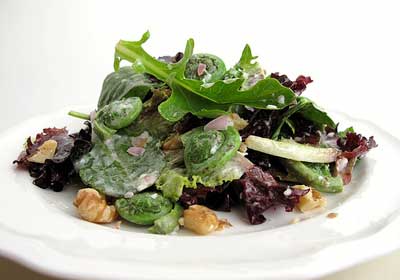 These curlicue-shaped fiddlehead greens are a specialty of the forest. They are actually fern fronds. Fiddleheads have such a short season since they're picked before the ferns have a chance to unfurl their fronds. They're definitely a specialty that you'll only see sold in farmers' markets and served in restaurants as a special dish of the evening. Rather expensive, fiddleheads are still worth buying, because a little does go a long way. Just a handful can add interest to salads or side dishes.
These curlicue-shaped fiddlehead greens are a specialty of the forest. They are actually fern fronds. Fiddleheads have such a short season since they're picked before the ferns have a chance to unfurl their fronds. They're definitely a specialty that you'll only see sold in farmers' markets and served in restaurants as a special dish of the evening. Rather expensive, fiddleheads are still worth buying, because a little does go a long way. Just a handful can add interest to salads or side dishes.
